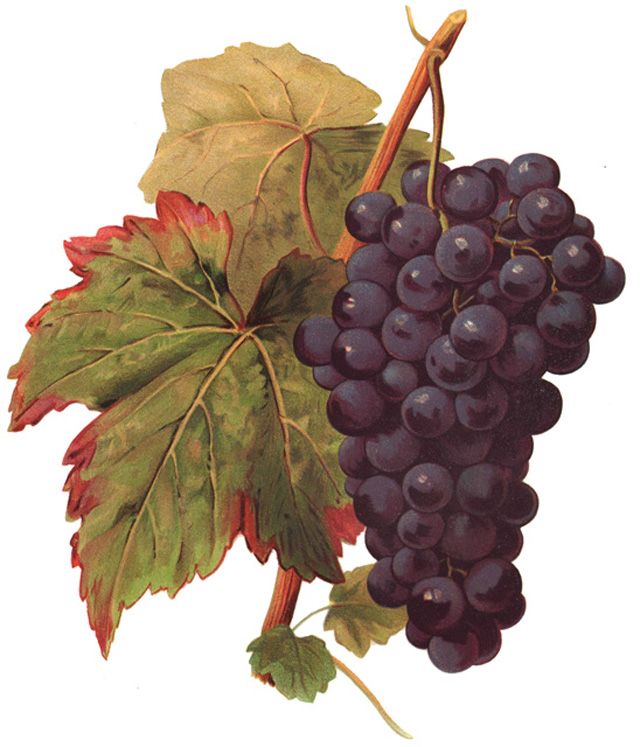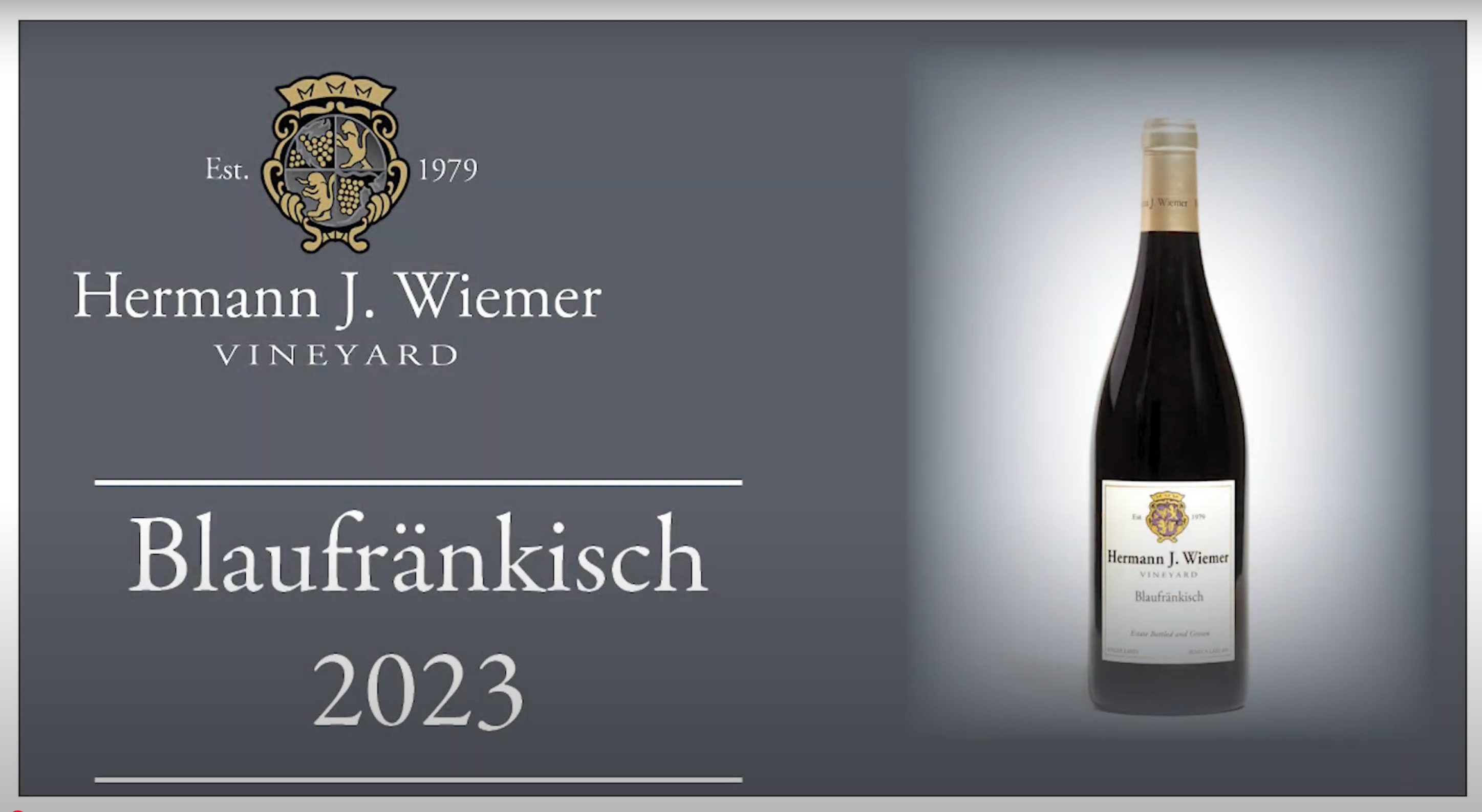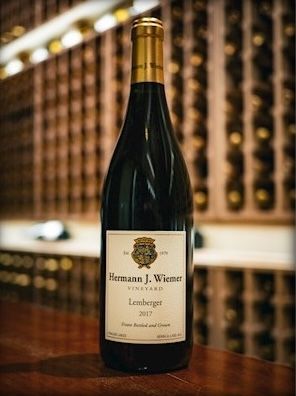REGULAR HOURS: TUESDAY-THURSDAY 12-6PM // FRIDAY & SATURDAY 12-8PM // SUNDAY 12-5PM // CLOSED MONDAYS
EXTENDED HOLIDAY HOURS: OPEN MONDAY // FRIDAY TO TUESDAY OPEN UNTIL 8p // NYE 11a- 5p // CLOSED 1/1 and 1/2

Last week, we had the honor of welcoming Oskar Bynke, co-owner and agronomist of Hermann Wiemer Vineyard—one of the oldest vineyards in the Finger Lakes region of Upstate New York. We had the opportunity to taste eight distinctive wines from their properties on both the east and west coasts of Seneca Lake. Notably, we compared a 2023 Blaufränkisch and a 2017 Lemberger, both from their Josef & Magdalena Vineyards.
Grape origin:
The legend of Blaufränkisch traces back to Emperor Charlemagne (742–814), who is said to have contributed to its development by ordering the separation of high-quality Franconian grape varieties from inferior “Hunnic” ones. This selection process is believed to have led to the emergence of Blaufränkisch, with historical ampelographic sources indicating its origins in Lower Styria, near the village of Lemberg (now Slovenian Styria). The first official documentation of Blaufränkisch dates to 1862, when it was exhibited in Vienna, Austria. The name Fränkisch refers to the German wine region of Franconia, renowned in the Middle Ages for its noble grape varieties. In Hungary, the grape is known as Kékfrankos (Kék meaning “blue” in Hungarian), which explains its Austrian synonym Blau (blue) Fränkisch (Franconian).
Today, Blaufränkisch is Austria’s second most cultivated grape variety after Zweigelt, accounting for 6% of the country's vineyard area, primarily in Burgenland around Gols, near the Hungarian border. In Germany, it is known as Lemberger and is primarily grown in Württemberg near Stuttgart. Beyond Austria and Germany, Blaufränkisch is found in Eastern Europe, as well as Australia, Japan, Canada, and the United States. In the U.S., it is grown in California, Colorado, Idaho, Maryland, Michigan, Montana, New England, New Jersey, New Mexico, Ohio, Pennsylvania, Rhode Island, Virginia, Washington, and New York.
Organoleptic characteristics:
However, defining a singular style for Blaufränkisch is challenging, as its character varies depending on the climate and soil in which it is grown. In cooler climates, it tends to produce a more refined, vibrant wine with a lively acidity, somewhat reminiscent of Pinot Noir in texture, though not in flavor. In warmer climates, it develops a bolder profile with intense aromas and a remarkable structure, showcasing its full depth and complexity.
Blaufränkisch is known for its complex aromas of black cherry, blackcurrant, blackberry, herbs, and mint, with peppery notes that can emerge depending on the style and ripeness level. It is characterized by a finely balanced acidity and firm tannic texture, giving it a robust structure and excellent aging potential. Typically deep ruby in color with a relatively high alcohol content, its expression is greatly influenced by terroir and winemaking techniques. Young Blaufränkisch wines are intensely fruity, while aging brings greater suppleness, velvety texture, and complexity. In the United States, its versatility allows it to be crafted into various styles, including clarets and fortified wines.

Hermann Wiemer Vineyards
Blaufränkish 2023, Magdalena Vineyards*
Seneca Lake, Finger Lakes, Upstate New York
With a well-balanced medium garnet hue, this wine presents a round and expressive nose, revealing notes of warm black cherry clafoutis, Kampot black pepper, steamed wood, damp cedar, forest pine, and raw Ribeye beef. The palate is enveloping, with good acidity and imposing and present, yet melting, tannins. The impression of the wine is of great rusticity, both granular and powerful but without excessive alcohol (only 12.5%). The finish lingers with hints of bitter black licorice, stewed yet not sweet blackberries, and spicy dark berry notes. In its youth, this wine pairs beautifully with Asian or Mediterranean cuisine, meat dishes like lamb stew, or, for vegetarians, smoked eggplant lasagna. It also complements the Garlic & Herb cheese from Bella Vitano in Wisconsin.
*This wine is available in Massachusetts exclusively Massachusetts at Bonde Fine Wine

Hermann Wiemer Vineyards
Lemberger 2017, Magdalena Vineyards**
Seneca Lake, Finger Lakes, Upstate New York
I enjoy comparing single-varietal wines from the same vineyard and block, harvested and vinified by the same winemaker, where the only difference is the vintage. It’s the best way to understand how climate variations impact the wine from year to year, while also illustrating the influence of human decisions in response to these varying temporal factors. Like the 2023 vintage, this wine was crafted by Fred Merwarth and Dillon Buckley, without the direct influence of Hermann Wiemer, who retired in 2007.
After seven years of maturity, this wine has reached visual ripeness, displaying a matte purple core with hints of brick, verging toward tiled and polished bronze tones. While the 2023 vintage exuded youthful vibrancy, the 2017 expresses wisdom and reflection, with powdery notes of old brown leather, white pepper, damp cellar, plum compote, blackcurrant, myrtle berry, and cool stone. The palate echoes the nose, but with a more discreet and melted acidity, with fine and softer tannins that still keep the rustic typicity so specific to these old cold climate grape varieties. Here the creamy side made complete by very pronounced notes of old black tobacco leaves, very old leather worn from horse harnesses, and a mixture of spices cleverly mixed to create this dark and austere, but very bewitching aspect. The finish develops on dry tannins and a medium body finish with long notes in languid music.
Here the pairings contradict those of 2023: the stew must be beef (mutton or goat would also be sublime). It would pair beautifully with the cuisine of northern China, as well as with all the elements of Mongolian cuisine. But also, a vegetarian or royal Moroccan couscous would make a delightful marriage. For cheese, I recommend a very old Gouda (which means "cooked") or a similar cheese from the USA such as the Gouda from Arethusa Farm Dairy in CT.
**This wine is exclusive to Bonde Wine Club members only
REGULAR HOURS: TUESDAY-THURSDAY 12-6PM // FRIDAY & SATURDAY 12-8PM // SUNDAY 12-5PM // CLOSED MONDAYS
EXTENDED HOLIDAY HOURS: OPEN MONDAY // FRIDAY TO TUESDAY OPEN UNTIL 8p // NYE 11a- 5p // CLOSED 1/1 and 1/2
